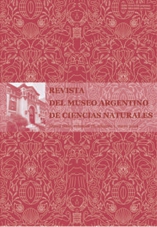Interacciones competitivas en una comunidad de líquenes murícola
Resumen
Palabras clave
Texto completo:
PDFReferencias
Armstrong, R.A. 1982. Competition between three saxicolous species of Parmelia (Lichens). New Phytol 90:67-72.
Armstrong, R.A. 2002. The effect of rock surface aspect on growth, size structure and competition in the lichen Rhizocarpon geographicum. Environ. and Exp. Bot. 48: 187-194.
Armstrong, R.A & S.N. Smith. 1997. Factors associated with degeneration of the thallus centre in foliose lichens. Symbiosis 22:293-302.
Armstrong, R.A. & A.R. Welch. 2007. Competition in lichen communities. Symbiosis 43:1-12.
Barkman, J. 1958. On the ecology of crytogamic epiphytes. Van Gorcum & Co.
Begon, M.; C.R. Townsend & J.L. Harper. 2006. Ecology, from individuals to ecosystems. 4th ed. Blackwell Publishing. Ltd. U.K. 755 pp.
Dale, M.R.T. 1985. A geometric technique for evaluating lichen growth models using the boundaries of competing thalli. Lichenologist 17:141-148.
García, R; Rosato V & Kristensen M.J. 2014. Análisis de las comunidades liquénicas presentes en construcciones edilicias de la ciudad de La Plata. Ciencia y tecnología de los Materiales 4:71-79.
Guiamet, P.S.; V Rosato; S. Gómez de Saravia; A.M. García & D.A. Moreno. 2012. Biofouling of crypts of historical and architectural interest at La Plata cemetery (Argentina). J. Cult. Herit. 13(3):339-344.
Hale, M.E.. 1974. The Biology of Lichens. 2nd edn. Edward Arnold. London. 181 pp.
Hilmo, O. 1994. Distribution and succession of epiphytic lichens on Picea abies branches in a boreal forest, Central Norway. Lichenologist 26:149-169.
James, P.W.; D.L. Hawksworth & F. Rose. 1977. Lichen communites in the British Isles: a preliminary conspectus. [10] Pp. 295–419 in: MRD Seaward (ed.). Lichen Ecology. Academic Press. England. 550 pp.
John, E.A. 1989. An assessment of the role of biotic interactions and dynamic processes in the organization of a species in a saxicolous lichen community. Can. J. Bot. 67:2025-2037.
Oksanen, J. 1984. Interspecific contact and association in sand dune vegetation dominated by bryophytes and lichens. Ann. Bot. Fenn. 21:189-199.
Orwin, J. 1970. Lichen succession on recently deposited rock surfaces. New Zeal. J. Bot. 8(4):452-477.
Pentecost, A. 1980. Aspects of competition in saxicolous lichen communities. Lichenologist 12:135-144.
Rogers, R.W. 1990. Ecological strategies of lichens. Lichenologist 22:149-162.
Rosato, V.G. 2006. Diversity and distribution of lichens on mortar and concrete in Buenos Aires province , Argentina. Darwiniana 44(1):89-97.
Rosato, V.G. & U. Arup. 2010. Caloplaca austrocitrina ( Teloschistaceae ) new for South America, based on molecular and morphological studies. The Bryologist 113(1):1-5.
Ruchty, A; A.L. Rosso & B. McCune. 2001. Changes in epiphyte communities as the shrub, Acer circinatum, develops and ages. Bryologist 104:272-281.
Sheskin, D.J. 2003. Handbook of Parametric and Nonparametric Statistical Procedures. CRC Press, Boca Raton, United States. 1926 pp.
Seaward, M.R.D. 2008. Environmental role of lichens. [14] Pp. 274-298 in: TH Nash III (ed.). Lichen biology. 2nd edn. Cambridge University Press, England. 477pp.
Stone, D.F. 1989. Epiphytic succession on Quercus garryana branches in the Willamette Valley of western Oregon. Bryologist 92:81-94.
Tilman, D. & P. Kareiva. 1997. Spatial Ecology: The role of space in population dynamics and interspecific interactions. Monographs in Population Biology 30. Princeton University Press, Princeton. 416 pp.
Topham, P.B. 1977. Colonization, growth, succession and competition. in: M.D.R. Seaward (ed.). Lichen Ecology, pp. 31-68, London: Academic Press, England. 550 pp.
Woolhouse, M.E.J.; R. Harmsen & L. Fahrig. 1985. On succession in a saxicolous lichen community. Lichenologist 17(2): 167-172.
Enlaces refback
- No hay ningún enlace refback.

This work is licensed under a Creative Commons Attribution 3.0 License.

